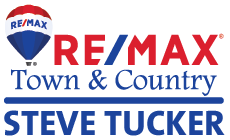The first form we will fill in and have you sign is a form called an “Exclusive Buyer Brokerage Agreement”. This Agreement establishes your relationship with myself and my brokerage firm, RE/MAX Town and Country, and if you sign it and agree to be my “client” I can then give you advice on how to negotiate the best price on the home. I typically make these valid for 60 – 90 days and the Agreement basically says that any real estate transaction you would enter into in the State of Georgia during the term of the Agreement (60 – 90 days) RE/MAX Town and Country (and myself) would represent you as the Buyer. This is also sometimes called a “Buyer’s Agent” Agreement
The next form is the “Purchase and Sale Agreement”. This is the most important one as it establishes the price you want to offer on the home, the amount of time that you will allow the Seller to consider your offer, how much Earnest Money Deposit you will be putting up to show you are serious, how long your Due Diligence period will be, what the closing date is going to be, how you will pay for the home (cash, conventional financing, FHA financing, USDA financing, etc.), if there are any contingencies and/or special stipulations, etc. This Agreement is then presented to the Buyer. When both the Buyer and Seller have agreed to all the terms, signed the contract and the complete contract has been delivered to both parties, the date that this happen is called the “Binding Agreement” date and it marks the beginning of all contingencies on the contract, including the Due Diligence period. Speaking of Due Diligence, this is defined as the amount of time where you can get out of the contract and still get your earnest money deposit back in full and is also the time frame for you to have any inspections, surveys, check out the internet service, neighborhood and neighbors, etc. If you are buying a lot without a home on it then it is also your opportunity to get a soil test to ensure the soil “percs” for a septic tank, and has a drinking water source, a way to get electricity, phone and internet to it, etc.
The Purchase and Sale Agreement also specifies how you are going to pay for the property, so we will also attach either an “All Cash Offer” exhibit (which requires you to send proof that you have the funds to purchase the property within 5-7 days of “Binding Agreement”) OR we attach a “Financing Contingency” exhibit. This requires you to immediately apply for a loan (preferably within 5 days of Binding Agreement) and obtain approval for that loan within a certain number of days of “Binding Agreement” (usually 21 – 30 days). Binding Agreement is defined as the date upon which both the Buyer and the Seller have agreed in writing to proceed with the transaction. Please note that “Loan Approval” and a “Pre-Approval” are different from each other. A Loan Approval is granted by a lender on a particular property and means that the lender scrutinizes all aspects of your formal loan application as well as the specific home that is being purchased by sending the loan through an “underwriting” process. This is different from a “Pre-Approval”, which basically just says that if they go through the loan process and your debt, income, and savings are what you say they are then you will most likely be approved for a loan on a specific home up to a certain purchase price.
You also may have several other “Exhibits” attached as part of the Purchase and Sale Agreement, such as a:
“Property Disclosure Statement” (or PDS), whereby the Seller discloses any known material defects related to the property.
“Community Association Disclosure” (or CAD) whereby the Seller discloses the contact information for the Home Owner Association (HOA) or Property Owner Association (POA) as well as any related fees and what those fees are used for.
“Plat” which is a survey of the property lines and in some cases (if applicable) indicates the location of any easements and/or improvements to the property, such as a house, garage, barn, or other outbuildings.
“Covenants and Restrictions” (or C&R’s) document which up here in the mountains can actually be beneficial as most of the time they are only 10 – 12 pages long and state things like “No junk or inoperable vehicles”, “No mobile homes”, “No chickens, hogs or other farm animals permitted”, etc. By the way, just because a property has Covenants and Restrictions does not necessarily mean there is a Home Owner Association or Property Owner Association. You can have Covenants and Restrictions without having a Home Owner Association or Property Owner Association.
“Water Agreement” or “Shared Well Agreement” which defines how the water supply is delivered to the property and what fees you will be expected to pay for the water once there is a home on the property.
“Road Maintenance Agreement” which defines the annual fees required in order to maintain the roads within the community.
I hope this helps explain the Real Estate Purchase process and I look forward to being here for you through the entire process every step of the way.
Steve Tucker
“Your Friend in Real Estate” for the North Georgia Mountains
706-457-5678 or 954-663-3036
Steve@BlueRidgeGARealty.com

